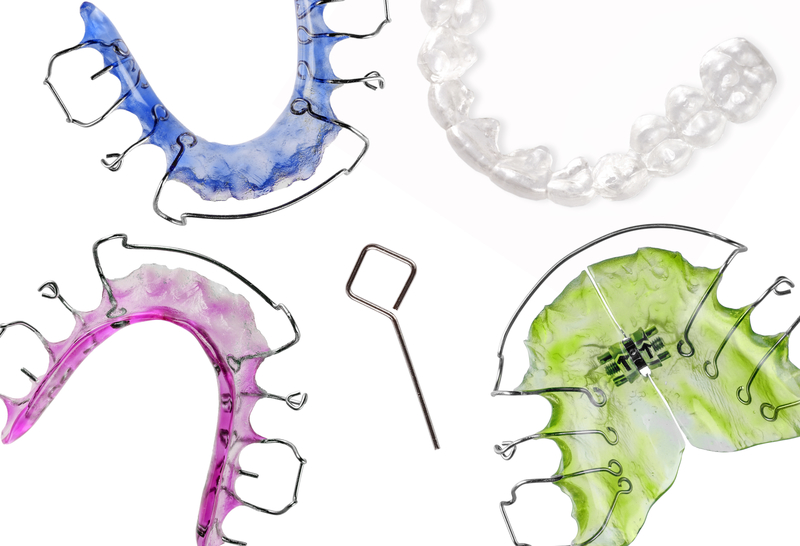Be Thankful for Orthodontic Treatment

Studies show that not enough Americans are taking good care of their teeth, especially through dental and orthodontic treatment. The advanced technology available today is what allows patients to keep their natural teeth healthy for life and is something that millions in the world don’t have access to. Find out why oral health services such as orthodontic treatment is so important to patients and something to be thankful for this time of year!
Your Oral Health
When you think of the most chronic conditions and diseases that plague people today, you may not think of cavities as being one of the them. The National Institutes of Health reports that tooth decay—or cavities—are the most “chronic, prevalent disease” among American children and adults. In fact, about 92% of people have tooth decay by the time they reach adulthood. In all age groups, roughly between 20% and 25% of people have untreated decay they are not aware of.
What does tooth decay have to do with orthodontic treatment? This decay can happen to anyone at anytime and you are more likely to have tooth decay during your orthodontic treatment. Many patients opt for lingual, ceramic or traditional metal braces to straighten their teeth. These methods require brackets that are bonded to the teeth with wires that pass through those brackets. Even though these appliances are highly effective for providing beautiful straightening power, they can make it harder to clean your teeth. Because it’s harder to clean them, and some patients don’t take the extra time to do this, you can end up with tooth decay. That adds to that 92% statistic.
The best way to eliminate your risk for that tooth decay (as well as other oral health diseases), is to properly care for your teeth both with and without braces. That involves brushing your teeth at least twice a day for 2 minutes at a time, as recommended by the American Dental Association. When you have braces, you have to do this after every meal to avoid acidic plaque buildup, which happens when your food and drink sugars mix with mouth bacteria. With braces, threadable floss to go around brackets and wires is generally needed, as well as cleaning items such as a waterpik (water shooter) tool and a proxabrush for brackets. Your oral health can be stellar during orthodontic treatment with the right oral hygiene.

How Does the U.S. Compare?
Orthodontic treatment is a time when those in the U.S. can have a greater risk for developing cavities. This comes from a lack of oral hygiene during your orthodontic treatment period. However, the world at large is battling oral health diseases and poor dental and orthodontic care on an epidemic scale. The World Health Organization reports that cavities (tooth decay) and gum disease (periodontal disease) “have historically been considered the most important global oral health burdens”.
60%-90% of people worldwide have tooth decay and oral diseases connected to this condition. Children are affected the most, but statistics are almost as high in adults worldwide. Even though the U.S. is at a high percentage when it comes to tooth decay (92%), the presence of tooth decay is generally eliminated in most of the population through proper dental work and access to dental services. In the majority of other countries—especially underdeveloped ones—dental or orthodontic work is not a possibility for most. Oral health diseases are simply left untreated or the teeth are pulled when they become too painful.
The Connection to Orthodontic Treatment
Getting a cavity or having an oral health problem during your life can definitely be avoided, but most people will have some sort of oral problem, even if it is small. There are ways to prevent those problems such as proper brushing and flossing every single day. A great way to reduce your risk for oral health diseases is through orthodontic treatment. For children, this is known as child orthodontics. The American Association of Orthodontics recommends that children have their first orthodontic appointment between age 7 or 8.
This is a time when baby teeth are starting to fall out and adult, permanent teeth are starting to come into the mouth. Proper examination by an orthodontist can sport bite and alignment issues that are developing in children. When these issues occur, the teeth can come in crooked all over or they may not rest in the position they are supposed to. This can lead to speech impediments, many dental emergencies and broken teeth in the future from uneven dental pressure, higher instances of tooth decay and gum disease, and problems with oral health diseases.
Orthodontic treatment when young can help align the teeth and jaws to prevent oral problems as a child grows. When teens and adults receive orthodontic treatment via braces, they can better straighten permanent teeth when they come in. This sets everything straight and functional before the jaws harden in adulthood. Straight teeth and aligned jaws make it so cleaning the teeth becomes almost effortless. The risk for tooth decay and gum disease is also significantly lower.

Be Thankful for Your Orthodontic Treatment
Dentistry and orthodontic treatment helps diminish the presence of oral diseases.Yes, tooth decay and gum disease happen frequently due to poor oral hygiene habits. However, orthodontic treatment can help prevent those problems in the first place. Great oral care can prevent developing problems throughout your life. Even when these issues do happen, you won’t have to simply get your teeth pulled or let them decay and fall out of your mouth.
You have great orthodontic and dental options in the United States that allow you to keep your teeth, while many people across the globe have to lose them. Remember that the next time you think about skipping your oral care appointments. To reduce your risk for oral health diseases, you can call Belmar Orthodontics at (303) 225-9016 and ask about your orthodontic treatment plan.
A Straight Smile for Life with Retainers

Most patients spend 18-24 months with their orthodontic appliances. That’s about 78-104 weeks of your life with braces, and time that you don’t want to have wasted. The worst thing that can happen after getting your braces off is that your teeth go crooked once more. This can happen within the first month if you’re not careful. Luckily, dentists know this and we provide our patients with either removable retainers or permanent ones. See why retainers are so important for maintaining a straight smile for life and why you need one!
Finishing Up with Braces
If you have gotten to the point in your orthodontic treatment that you need a retainer, congratulations! It has taken you 18-24 months to get that beautiful, straight smile you’ve wanted. No matter if you had lingual, ceramic, or metal braces, or if you opted for Invisalign treatment, you will still need an orthodontic appliance to keep your teeth straight. This isn’t something you want to wait on either, as studies show that your teeth start shifting back to their crooked state within the first month of getting braces off.
When our patients end their time with braces, we immediately prep them for either a removable or a permanent retainer. There are pros and cons to each of these types of retainers, but the bottom line is, you need one! A retainer is exactly what it sounds like; it “retains” your straight smile. When you wear it (usually at night), your smile won’t shift or become crooked. We take an impression of your teeth as soon as your braces come off, which we then send to our lab. You will have a retainer custom-made to fit your newly-straightened teeth that will keep them in that position for decades to come.

Retainers 101
You may need both a bottom retainer and a top one, or you might just need one. Some dentists only require a bottom retainer, as the bottom teeth tend to keep the top teeth in place. It all depends on the patient. As we mentioned, there are two types of retainers: removable and permanent.
- Removable – These are the classic retainer pieces that most people think of when they think “retainer”. When we make impressions of your teeth, we go back and use those impressions to make retainer pieces for your top and bottom jaw. Once they are done, you will come into the office and try out your new retainers. Wear them every day during the night and clean them when you take them out in the morning. Only use cleaning products that are safe for mouth retainers and never use hot water when cleaning.
- Permanent – This is also a “fixed” retainer because it is bonded to your teeth and set in place. Much like your braces (if you chose ceramic, lingual or traditional metal), we will bond metal parts to your teeth. However, these metal parts will be placed on the back of your teeth instead of the front. You can choose to have a metal bar that goes across the back teeth or you can choose small metal wires that will bond each individual tooth to the one next to it. If you choose the second, you will have the bottom 6 teeth connected, with bonding cement on each of the backs of those 6 teeth. However, the metal and bonding is small, so it won’t take up very much room in your mouth. You may not even notice it! Both the bar and series of small wires work to keep your bottom teeth in place, which will keep your top in place.
Which One Is Right for You?
Our patients can choose if they want to have a removable or permanent retainer. One might not be right for a patient depending on age and daily habits. If you often lose things (such as car keys or your phone), then you might want to choose a permanent retainer. These stay in place 100% of the time and because of that, you can never lose them. Plus, they retain your teeth around the clock, instead of only at night (like a removable retainer). Permanent retainers also aren’t visible like removable retainers are because they are attached behind your teeth.
A removable retainer will have visible bars that others will be able to see in your mouth when you show your teeth. This generally isn’t a problem, as most people wear theirs at night. If you already struggle with brushing and flossing your teeth, you might opt for a removable retainer, as flossing can be more difficult with a permanent retainer. However, both options are great for all our patients. You simply have to choose which one fits you best.

Healthy Life, Healthy Mouth
We would love every single one of our patients to have a straight smile many decades from now. If you wear your retainer like you should, or continually renew your permanent ones, you can count on keeping that straight smile. However, you also want to keep your smile healthy and free of disease throughout all those decades. After all, there is no point in striving for a straight smile if you don’t have any teeth!
No matter if you are 9 or 90, you have to keep up on proper oral hygiene practices if you want to have a healthy, beautiful smile. Brush and floss your teeth every single day, making sure to brush multiple times a day. Eat nutritious foods and cut down on the sugar to reduce your risk for tooth decay and gum disease. Also, clean your retainer every day so that it stays strong and durable for many years. If you need a new retainer, or are interested in a permanent retainer option, call Belmar Orthodontics today at (303) 225-9016!

